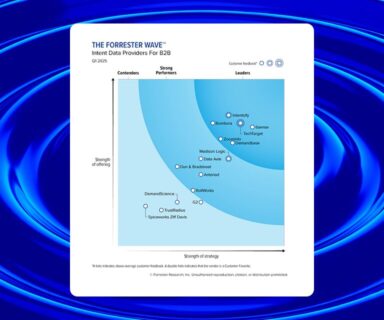 In our many conversations with partner marketing teams, we’ve seen a wide range of approaches when it comes to marketing with partners and marketing through partners.
In our many conversations with partner marketing teams, we’ve seen a wide range of approaches when it comes to marketing with partners and marketing through partners.
For a better understanding of how organizations utilize the two motions to drive success in their partner marketing programs, Michael Latchford, VP of Strategic Alliances and Partner Marketing Services, spoke with Partner Marketing executives Helen Kim (Red Hat), Mark Murphy (Cisco), Julie Malloy (Intel). Here are a few highlights from their conversation.
Differentiating marketing with and through partners
There are many different marketing motions that organizations use within their partnerships to advance their business objectives. Among these, with and through techniques are especially important because of the high degree of collaborations necessary to do them well.
Marketing with a partner is when two or more organizations come together promotionally. In this approach, marketing efforts are typically executed as a combined effort, although weighting of tasks can vary significantly among the players.
Helen Kim of Red Hat describes their marketing with partners as a “co-sell, co-market motion” that enables them to “deliver that differentiated value proposition to our customers from a solution-point and answer questions around how to solve our customers’ problems together and building the right GTM capabilities to do that.”
“… we call [marketing with partners] our “better together” story,” says Intel’s Julie Malloy. “And with that with part we’re also sharing a lot more about our direct plans. So what is Intel going to be doing by themselves into the market, what are the partners putting into the market and then how do we take those two separate messages and make sure what we create in the middle is adding even more value than what we were doing separately.”
Marketing through partners is usually substantially less collaborative. In this approach, one partner is typically funded by the other and is expected to complete the promotional activity largely on their own.
Mark Murphy of Cisco, notes that when marketing through partners, although much of the marketing responsibility is removed from his team, they need to ensure that they’re providing the right resources to their partners to be successful. “How do we enable our partners? How do we drive our work through the partner to the end customer?”
Tapping into the potential of a giant partner ecosystem
The clear attraction of marketing with and through partners is the potential these approaches offer for scaling their market impact, both through expanding their core solutions’ marketing reach and relevance via different types of partners and by deepening their sales penetration capabilities via increased numbers of trained selling resources.
“… the clear advantage of a partner ecosystem is that if we are just Cisco, then we’ve got how many thousands of salespeople, but if we have 70,000 partners, we double, triple, quadruple the number of people on the street that are talking to customers,” Mark Murphy says. “We all know our biggest enterprise customers, but of the 99% of the customers that we have as a company, it’s our partners that have the relationships.”
And Murphy emphasizes that partners also bring unique insights to the buyers we’re trying to reach and are often in a better position to influence those buyers.
“As we look at that customer journey, there are clearly spots on it where our partner’s voice is more needed, respected and trusted than we would be as an ingredient brand,” says Julie Malloy. “… we really need to lean into these partners in order to figure out what the problem is that the customers are trying to solve – what solutions they need – and that will lead them hopefully to a product that is built on our technologies.”
Evolving approaches to drive partner growth
Unsurprisingly, within these rapidly evolving ecosystems, our panelists highlighted the need for their programs to adapt quickly. They each pointed to the transformations their own organizations are going through in parallel with the market.
One focus for the Cisco team is to evolve their program to better meet changing customer buying preferences. “All of us here, we’re buying things differently today – you’re clicking on Amazon, you’re buying a subscription for your phone service or you’re buying a managed service …,” says Mark Murphy. “So, from our standpoint, we’re really thinking about these new buying models – new routes [to market].”
For Intel, it involves customizing their programs to diverse partner types. “In the past, it was a one-size fits-all, 50/50 match, put this logo on, here’s your rule book and off they went,” recalls Julie Malloy. “Now as we’re looking into all these kinds of partners … we’re looking at how we put a framework around the investments and messages that we have and co-design it for marketing and the program …”
Helen Kim is embracing the change – her team is in the middle of a partner marketing transformation that’s required a prioritization of partners within their organization and across the entire company. “[We’ve seen a] shift of mindset – from not always fully embracing partners and customers – to going full speed ahead …” she says. “And we’ve now come kind of full circle onto what as a company we want to focus on as far as the success of our three to ten-year strategy, and partners are at the center of that.”
While areas of improvement and transformation will vary from partner program to partner program, flexibility across thinking, your team and your partnerships are critical to continued success.
For more insights from partner marketing experts, watch TechTarget’s Partner Marketing Visionaries webinar series. To learn more about products and services to support your partner marketing efforts, contact Michael Latchford.



